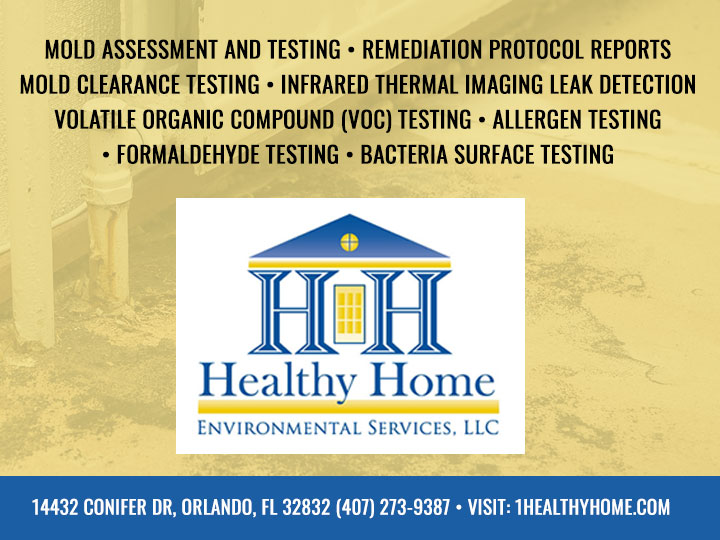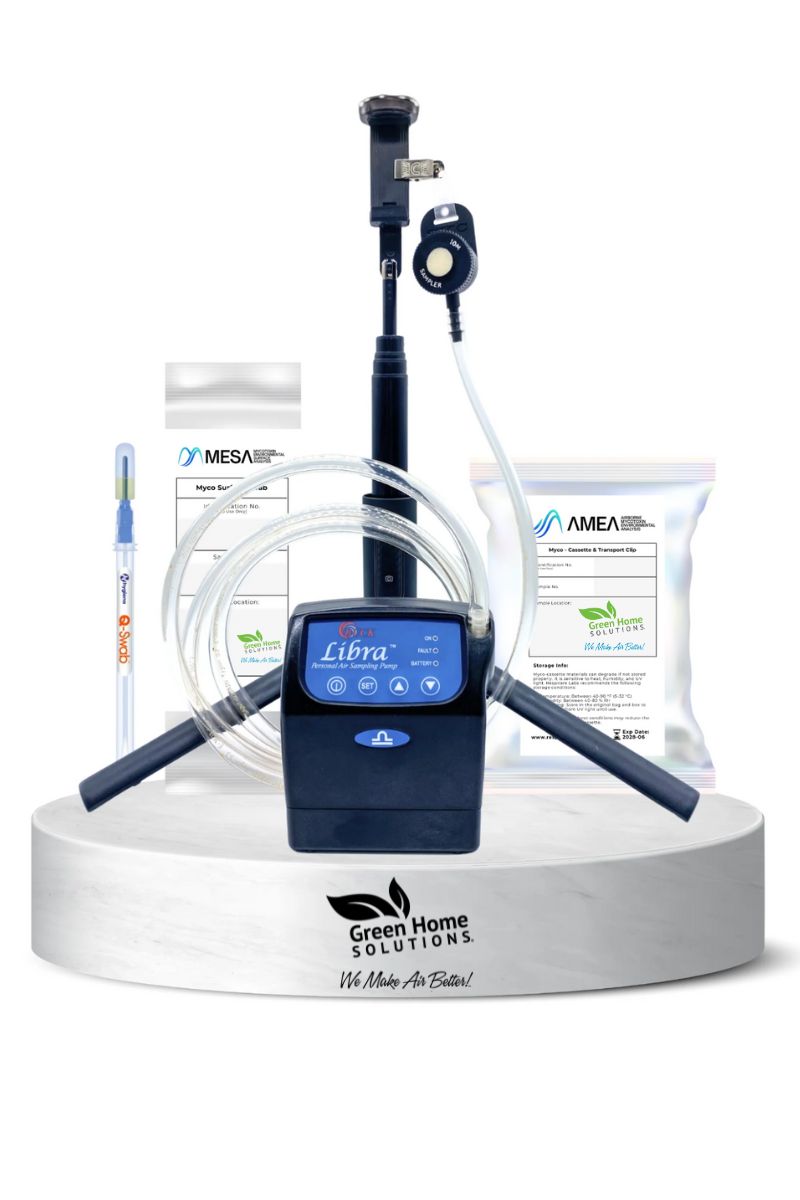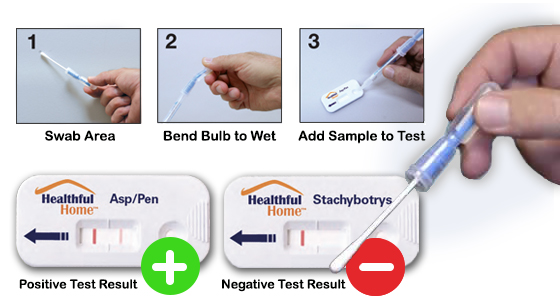Boost Your Security Protocols with Specialist Mycotoxin testing Services
Boost Your Security Protocols with Specialist Mycotoxin testing Services
Blog Article
Exactly How Mycotoxin Screening Helps Protect Against Contamination and Protect Food Products

Mycotoxin screening is a vital method in the food industry, working as a frontline protection against contamination by harmful toxic substances created by molds. Through the application of advanced methods like High-Performance Fluid Chromatography (HPLC) and Fluid Chromatography-Mass Spectrometry (LC-MS), food producers can accurately evaluate and detect mycotoxin levels in farming items. This proactive approach not only guarantees conformity with strict safety regulations but likewise minimizes wellness threats to customers. Regular screening strengthens brand name track record and economic health and wellness by lowering contamination-related incidents. So, just how specifically do these screening procedures integrate into the wider food safety approach?
Understanding Mycotoxins
Recognizing mycotoxins starts with recognizing that they are hazardous second metabolites produced by certain molds, which can infect farming products. These metabolites are not essential for the development or reproduction of the fungi however can have serious implications for human and animal health and wellness. Mycotoxins are generally discovered in staple crops such as corn, wheat, barley, and nuts, where they can proliferate under specific conditions of moisture and temperature.
There are a number of kinds of mycotoxins, each produced by different fungal varieties. Aflatoxins, created by Aspergillus types, are among one of the most infamous, known for their carcinogenic residential properties. Another significant team consists of ochratoxins, created by Aspergillus and Penicillium species, which have nephrotoxic effects. Fusarium types produce fumonisins and trichothecenes, both of which are connected with different severe and persistent health issues.

Risks of Mycotoxin Contamination
The risks of mycotoxin contamination are complex, presenting considerable threats to both food safety and security and public health and wellness. Mycotoxins, hazardous substances produced by certain types of fungis, can infect a broad range of farming products consisting of grains, nuts, spices, dried out fruits, and coffee.
Financial influences are another major issue. Contaminated crops can lead to substantial monetary losses for farmers and food producers as a result of lowered yields and the need for expensive purification measures. International profession can be considerably impeded as nations impose rigorous mycotoxin laws to safeguard their populaces, leading to turned down deliveries and strained trade connections.
Ecological factors such as climate adjustment aggravate the danger of mycotoxin contamination. Variations in temperature level and moisture can develop positive problems for fungal growth, boosting the possibility of contamination occasions. Hence, understanding and alleviating these risks are important for ensuring the safety and integrity of international food supplies.
Approaches of Mycotoxin Examining
Accurately determining mycotoxin contamination in agricultural items is necessary for securing public wellness and maintaining food safety criteria. Various methods are used to identify and measure mycotoxins, each offering certain advantages and constraints.
High-Performance Fluid Chromatography (HPLC) is a widely used technique due to its high sensitivity and accuracy. It entails dividing mycotoxins from other materials in an example, allowing find here exact metrology. Fluid Chromatography-Mass Spectrometry (LC-MS) incorporates fluid chromatography with mass spectrometry to give thorough molecular info, making it particularly valuable for recognizing multiple mycotoxins simultaneously.

Gas Chromatography-Mass Spectrometry (GC-MS) and Thin-Layer Chromatography (TENDER LOVING CARE) are additionally utilized, each with unique applications. GC-MS works for unstable mycotoxins, while tender loving care uses a less complex, cost-efficient option for initial screening.
Advantages of Routine Examining
Regular screening for mycotoxins in agricultural items uses many advantages, substantially contributing to public health and food security. By identifying contamination early, routine screening assists stop the circulation of toxic foods, therefore lowering the danger of mycotoxin-related health problems amongst consumers. This proactive technique not only safeguards human health yet additionally boosts the total high quality of food materials.
Regular testing additionally supports regulatory conformity. Various countries and areas have actually established rigid limitations for mycotoxin degrees in food and feed. Complying with these limits via regular testing guarantees that distributors and producers satisfy legal criteria, consequently staying clear of penalties and profession barriers. Maintaining conformity cultivates consumer trust fund and brand online reputation, which are crucial for market success.
Furthermore, normal mycotoxin testing can bring about significant economic benefits. Early detection of contamination enables for prompt treatment, decreasing possible losses from prevalent contamination. Executing normal screening procedures can additionally reduce recall expenses and relevant responsibilities, which can be financially ruining.
In addition, have a peek here normal testing provides useful data that can educate much better farming techniques and storage problems. By understanding patterns of contamination, producers can adopt safety nets, thereby reducing future threats and contributing to the sustainability of the food supply chain.
Implementing Examining Protocols
Applying efficient mycotoxin screening methods is critical for guaranteeing the safety and high quality of farming items. Each phase should be inspected to determine where mycotoxin contamination is most likely to occur.
As soon as important control factors are identified, selecting appropriate screening approaches is important. Usual techniques consist of enzyme-linked immunosorbent assay (ELISA), high-performance fluid chromatography (HPLC), and mass spectrometry (MS) Each technique has its staminas and weak points; therefore, choosing the appropriate one relies on the certain mycotoxin being examined, the called for level of sensitivity, and offered resources.

Last but not least, integrating the screening procedures right into a detailed food security management system is suggested. This improves traceability and allows speedy rehabilitative actions visit homepage when contamination is found, thus safeguarding the honesty of the food supply chain.
Final Thought
Mycotoxin testing is necessary in protecting against contamination and guarding food supplies by allowing very early discovery of unsafe toxic substances produced by mold and mildews in agricultural items. Routine testing improves brand track record, economic security, and trust in food security by decreasing contamination-related losses and preserving high requirements in food manufacturing.
Mycotoxin testing is a crucial practice in the food sector, serving as a frontline defense against contamination by damaging toxins created by molds. An integrated technique entailing farming methods, storage space management, and routine testing can minimize the risks connected with mycotoxin contamination, ensuring food safety and security and public health.
The threats of mycotoxin contamination are diverse, presenting substantial risks to both food safety and security and public health.Routine testing for mycotoxins in agricultural products offers many advantages, considerably adding to public wellness and food safety.Mycotoxin screening is important in preventing contamination and securing food products by making it possible for early detection of harmful contaminants produced by molds in agricultural items.
Report this page